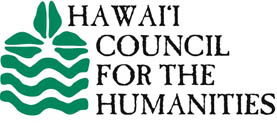John F.G. Stokes was a pioneer in the field of Hawaiian Archaeology. During the first decades of the 20th century, he travelled around the Hawaiian Islands and carried out extensive surveys, documenting cultural features, landscapes, and people with photography and mapping techniques.
Although Stokes’s manuscript Heiau of the Island of Hawai‘i was published in 1991 (edited by Thomas Dye), his manuscript that resulted from his survey of heiau on the island of Molokai was never published. In addition to heiau, he documented ko‘a, fish ponds, other structures, and people, and we have included the entire collection of maps and photographs from the Bishop Museum Archives in this online resource, which is managed in collaboration with the Ka Ipu Makani Heritage Center in Kaunakakai, Moloka‘i.
The online resource contains Stokes’s original maps and photographs from his Moloka‘i-based survey and these materials are provided as an educational resource. Please remember that the cultural sites documented in these maps and photographs are wahi pana, or culturally significant places. Please do not visit these places without permission from landowners and caretakers, please show respect for them. Do not touch or remove anything that belongs near or around these areas.
Contact Bishop Museum’s Library & Archives for information on reproductions and use of these and other Bishop Museum images.
A complete list of materials can be found by clicking on the Maps or Photographs pages.
Click on a thumbnail to see the full sized image. NOTE: Images are scanned at high resolution so some scrolling may be required to view the complete image.
NOTE: Data are transcribed from original documents and have not been modified to reflect current Hawaiian language diacritical spelling conventions.


